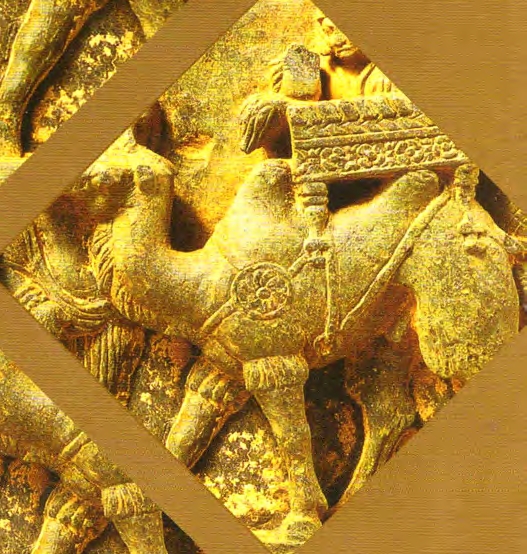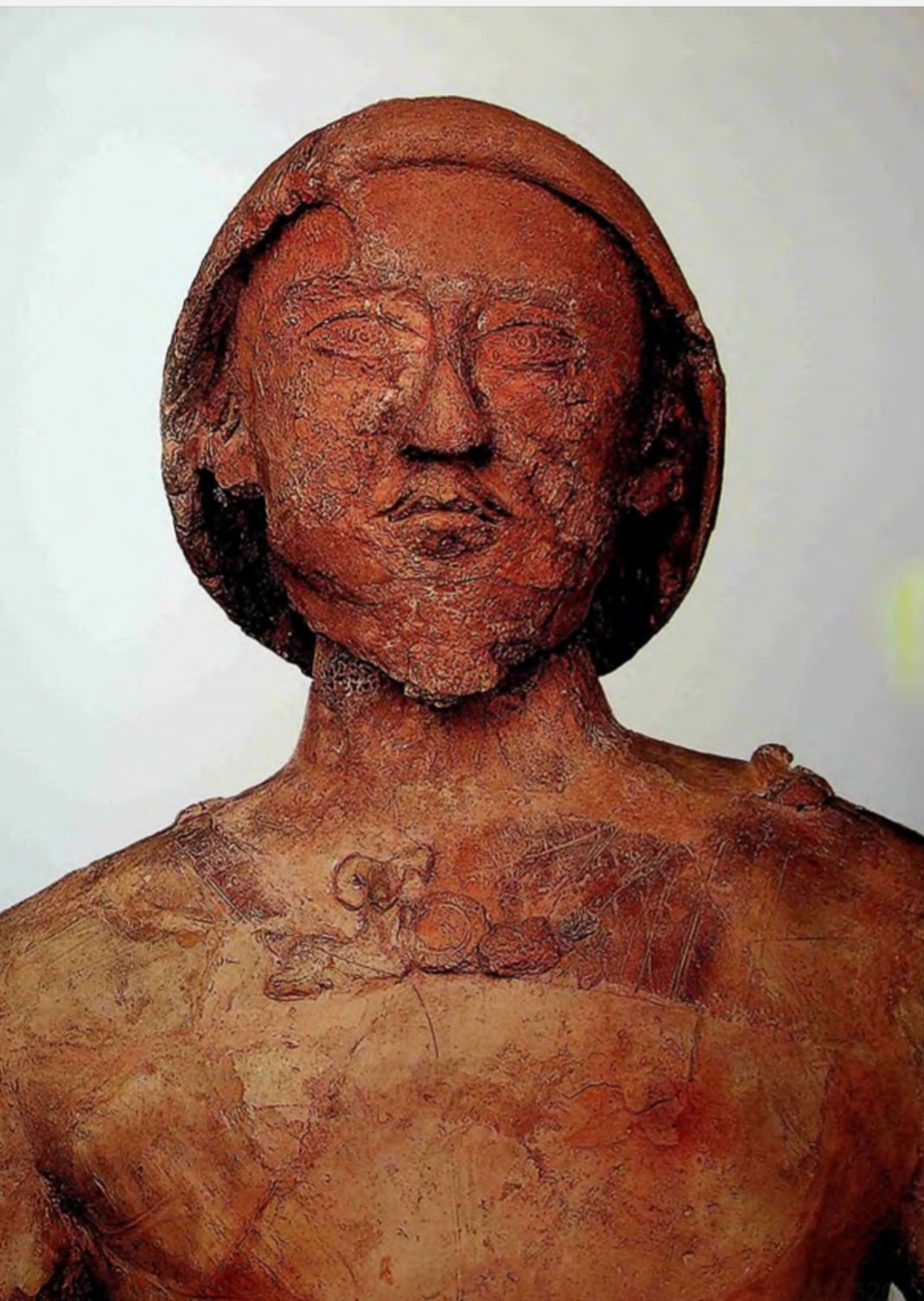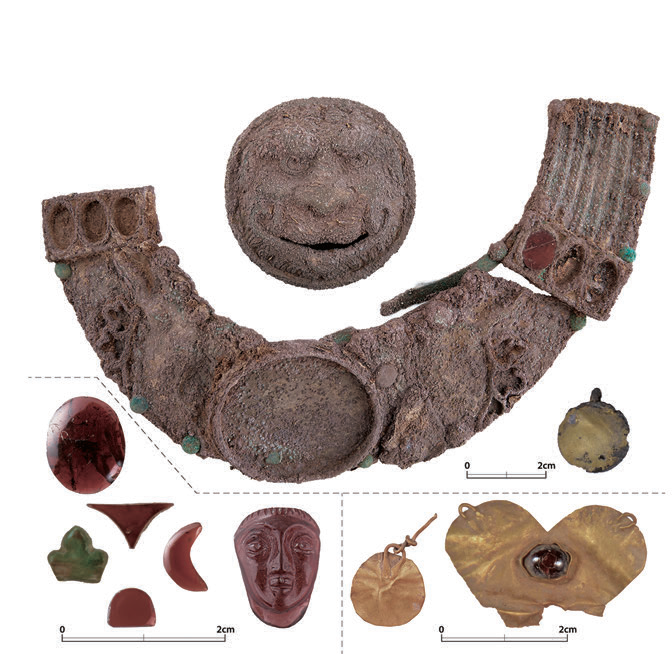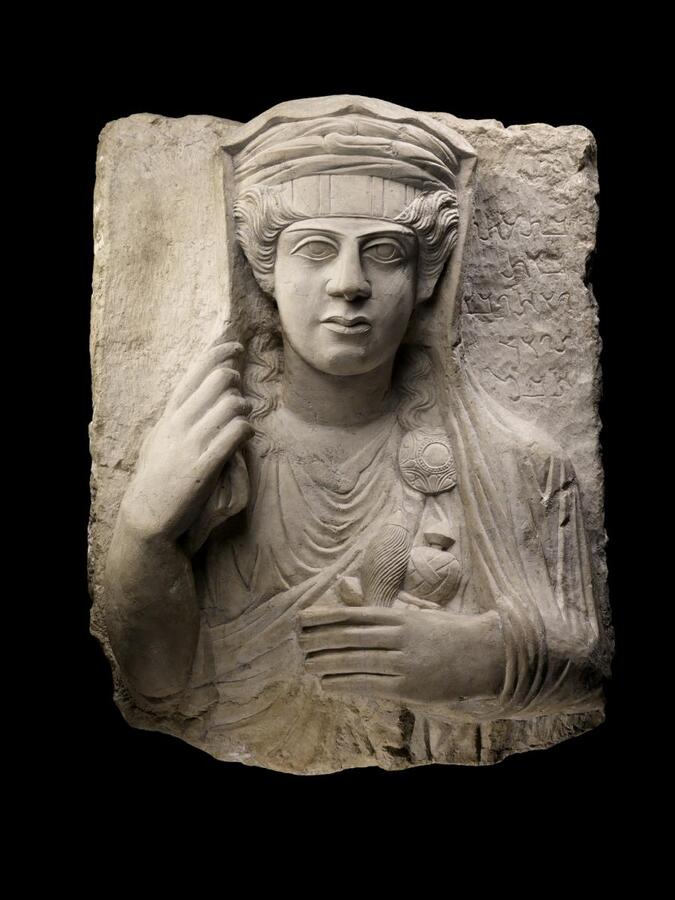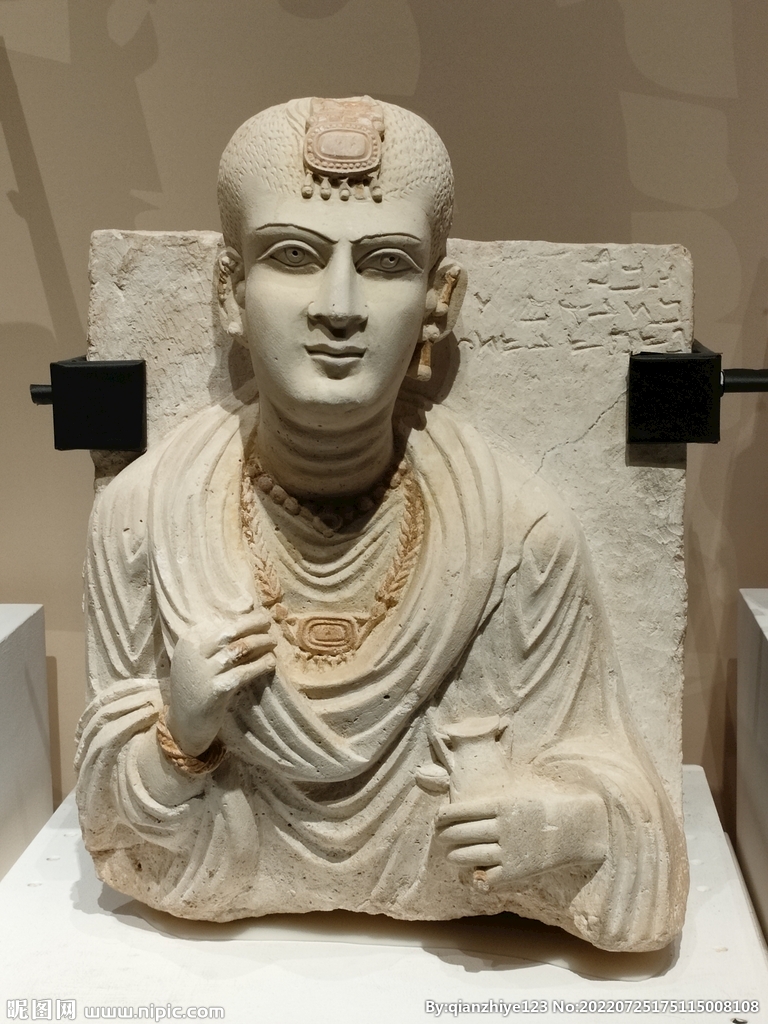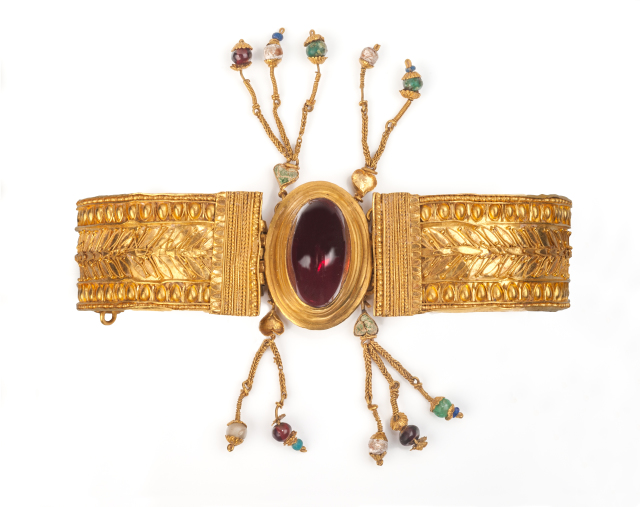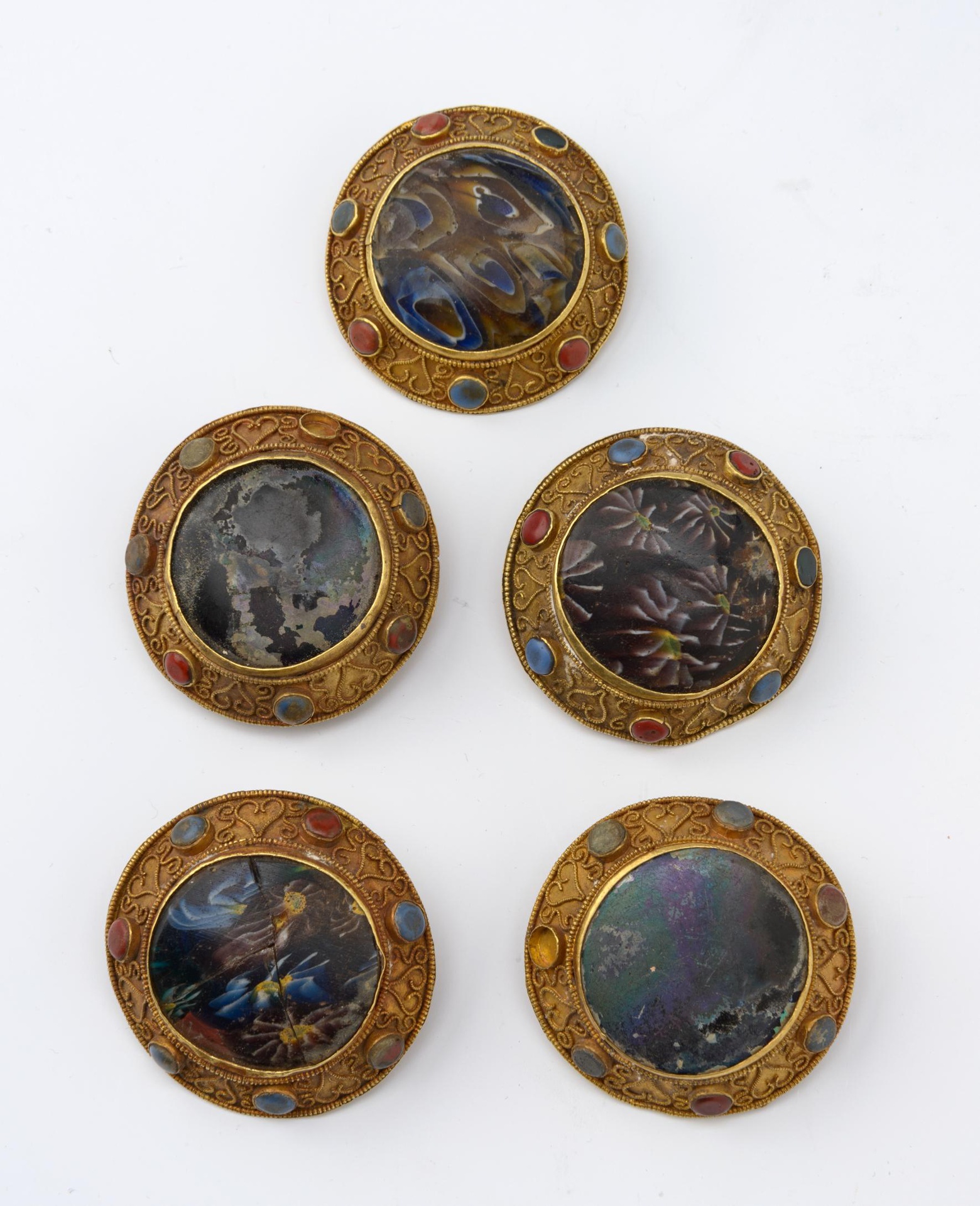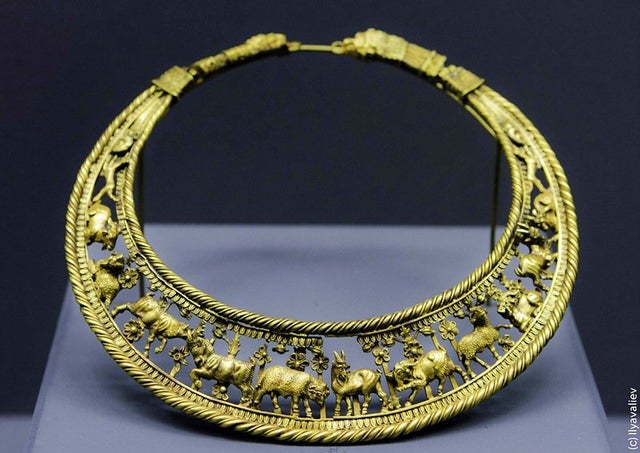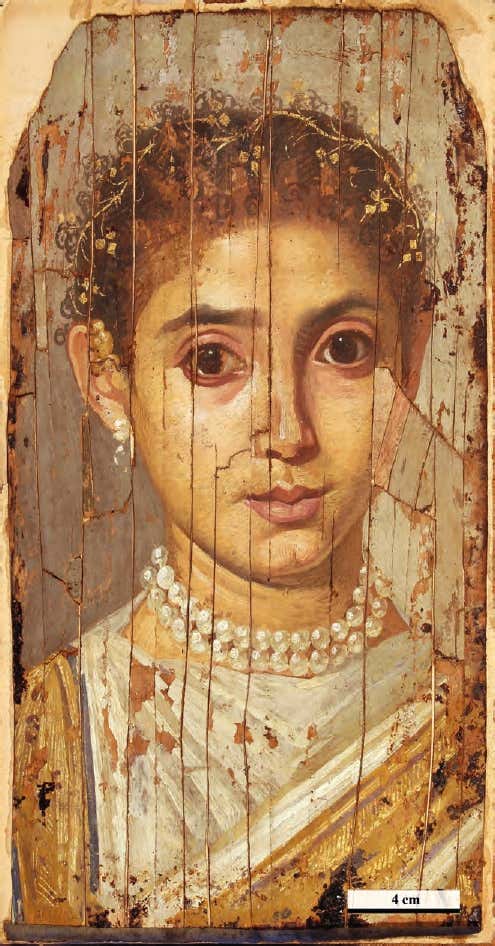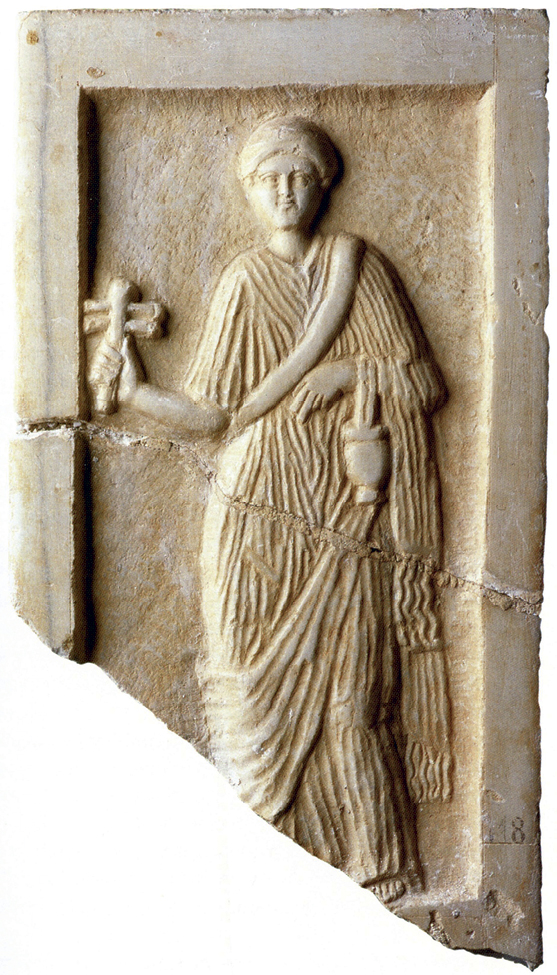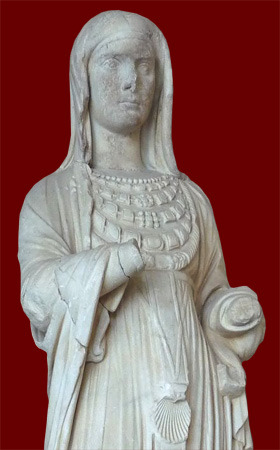
https://www.academia.edu/42808701/Jacobs_2016_Introduction_Ancient_Near_Eastern_Traditions_vs_Hellenization_Romanization

The sculpture probably showed a Graeco-Bactrian ruler, he is wearing a typically Persian headgear.
From the Temple of Oxus, 3rd-2nd century B.C.E.
Painted gypsum on clay
The Temple of the Oxus; B. A. Litvinskiy and I. R. Pichikiyan https://www.jstor.org
Relief clay decorations from the walls of the main reception chamber in the hall of the Yuezhi’ palace an the Khalchayan settlement [a major site of the Yuezhi (later Kushan) people in Bactria, today Surxondaryo Province, Uzbekistan]. 1st century BCE

Head of a Saka warrior, from Khalchayan, Uzbekistan

Khalchayan, Uzbekistan

Head of a Kushan prince
Khalchayan, Uzbekistan






after

The Noin-Ula Xiongnu burial kurgan (tumulus) in North Mongolia, 1st century BCE – 1st century CE. Fragment of an embroidered woolen textile with a scene of a ritual: “To the left of the altar is the king (priest), who is holding a mushroom over the fire. Opposite him is a warrior in a jacket with a “tail” and a belted quiver“
The textile from the Xiongnu burial ground was made in Bactria most likely, and may represent the Yuezhi men.
[![]() ]
]

Dalverzin Tepe, Uzbekistan. Painted gypsum on clay, head of a woman
1st century BCE – 1st century CE


Dalverzin Tepe, Uzbekistan. Painted gypsum on clay.
Head of a prince, 1st-2nd century
- Nomad Migration in Central Asia, Kazim Abdullaev https://www.researchgate.net
- Polosmak, Natalia Viktorovna,
 : 30 Aug 2010 , “We drank Soma, we became immortal…” , volume 26, N2
: 30 Aug 2010 , “We drank Soma, we became immortal…” , volume 26, N2 - Polosmak, Natalia Viktorovna [Полосьмак Наталья Викторовна] Nouvelles découvertes de tentures polychromes brodées du début de notre ère dans les tumuli n° 20 et n° 31 de Noin-Ula (République de Mongolie) [article]
- КУШАНСКОЕ ЦАРСТВО: ДИНАСТИИ, ГОСУДАРСТВО, НАРОД, ЯЗЫК, ПИСЬМЕННОСТЬ, РЕЛИГИИ
Э. В. РТВЕЛАДЗЕ [Ėdvard Vasilʹevich Rtveladze], Ташкент, 2019 https://legacy.uz

